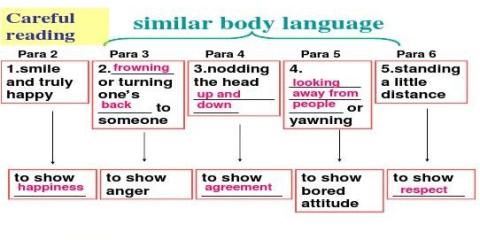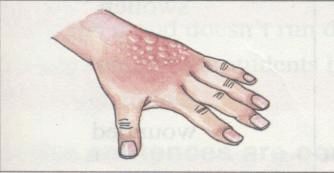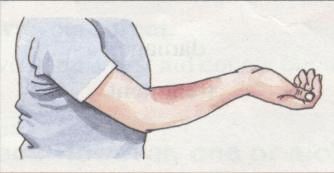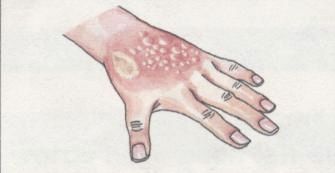高三上英语备课组工作总结
高三是充满了挑战和艰辛的一年,特别是高三上学期,我们要在一学期内完成四个学期的教学内容的复习工作,时间紧,任务重,我们高三英语备课组全体老师利用集体的力量和个人的智慧,围绕着学校的中心工作,以全面提高学生的思想和文化素养为工作目标,积极开展科组的教学教研活动,努力提高教师的思想素质和业务素质,并且认真探讨英语教育的特点,根据教材的基本要求灵活地进行内容新编,精心地设计编导课堂教学活动,顺利完成本学期的英语教学工作。现将本期工作总结如下:
一、 集体备课是发挥群体优势,提高备课质量的重要途径,也是落实教学常规,提高课堂教学效率的必要措施。为此,我组的集体备课有序地进行,通过集体备课, 发挥所有老师的智慧,扎扎实实上好每一课;通过集体备课,使各位教师明确近期和远期任务;做到统一教学和复习进度、教案、课件、练习等。总之,备课组内资源共享,分工合作。这样教学上既有所统一,又各有特色。老师们经常就教材、教法等问题进行研究、探讨,备课组内形成了比较浓厚的研究气氛。集体备课不流于形式,更注重内容与实效。
二、在备课组内加强听课评课活动。本学期,我们一如既往,在备课组内开展互相听课评课活动。通过坚持这个教学常规,保证备课组的教学质量。 备课时,认真把握好教材的深度与难度,在注重学生活动能力培养的同时,扎实抓好英语基础知识的积累。与此同时, 我们也进行了相应的练习,并在词汇、听力写作等方面作了专题辅导和训练。
三、加强对高考信息的研究。我们认真研究了几年的高考试题,制定了有效的措施,确保在进行常规教学的同时,注入高考的知识。并从以下几方面入手
(1)坚持抓好阅读理解。阅读理解是高考的重头戏,占的比重最大。因此,在平时的教学活动当
中我们注重抓好这一环节,让学生每天都做两篇左右的阅读理解文章,提高阅读理解能力。
(2)抓好书面表达。平时针对近年高考常见的书面表达题型进行训练,并让学生利用早晚读节时间背诵范文,熟悉常见的表达方式。
(3)抓好测试、评价、反思及鼓励工作。除了每个月的月考,我们还利用周五第八节进行周练,以此来检查复习效果。
四、更新教学观念,丰富教学内容,提高学生学习英语的兴趣。充分利用多媒体教学,让学生观看与课文有关的电影片断或图画,深受学生喜爱。这样既了解背景知识又提高了学生的学习兴趣,取得较好的效果。
五、充分利用周二和周四晚读时间对学生进行听力训练,取得了明显的效果。
总之,这学期老师们配合默契,不断探索开拓,表现出良好的师德和敬业精神。我们力争在新的学年里,继续保持刻苦耐劳的态度,发扬团结合作的精神,进一步加强学生基础知识教学,帮助学生提高综合运用能力。
本期虽然结束,但我们深知, 我们还有很多不足之处,还需要我们做更进一步的努力,我们会采取更加有效的手段,让学生自觉背好单词,加强对基础知识的学习,争取在今后取得更大的进步。
高三英语备课组
2013-01-15
第二篇:20xx学年高二英语组集体备课的3个案例
案例1:备课内容:Unit 4 Module 4 Body language
主备人:苏捍东
集体备课教师:梁巧华、李香艳、任文东、雷玲、张冬梅、
向艳、郑晶、范小叶、赵耀军
一、第一次集体备课:备课组集体讨论单元的教学目标、内容与课时安排。
本单元教学内容和目标要求:
1. Topics
1)Talk about body language
2)Describe gestures and facial expressions
3)Practice making offers and requests
4)Write an imaginary story
2. Function:
1.) Learn to use the expressions to make offers and requests and show thanks.
2.) Grammar:the -ing form used as adjectives and adverbials.
课时安排:
本单元建议分8个课时完成。
第一课时:warming up & Reading
利用图片辨识不同表情和身体语言,充分吸引学生对本单元学习的积极性(可以不用书本中第25页的图片)。
课堂活动:可采用课本52页的活动。
发给学生若干纸条,上面写有“I’m sad”, “Go away”, “You’re great” 等,让他们表演,另外的同学来猜。
通过以上两个活动,让学生了解身体语言。
读前活动:让学生分小组讨论,什么情况下会产生身体语言方面的误会?甚至纠纷?一个小组派一名同学汇报。 然后初步阅读26页课文:Communication: No Problem?让他们体会由于身体语言不同而引出的故事。
第二课时:Reading & Comprehending
由于第一课时只是对课文的简单了解,所以这节课对课文进行深层次的阅读并解决语言问题(重点词汇和难句的分析)。自编一些课文理解问题以引导学生去分析课文,培养阅读微技能,同时课本Comprehending中的第2-3题删去。
第三课时:Listening
围绕身体语言的主题进行听力训练。利用课本里两个听力训练内容(第31页和第62页)。
第四课时:Leaning about language:vocabulary
利用各种方式加深对本单元单词和词组的理解,学习重点词汇的运用。课本第29页练习3不用。主张学生去查字典或其他参考书,用重点词汇造句。
第五课时:Leaning about language:grammar
1
学习语法内容:-ing形式作定语。操练的形式要多样化,以有语境的句、篇形式为佳。自己编资料。
第六课时:Using language:Reading
阅读Showing our feelings, 让学生写一篇有关身体语言的文章, 比如中英身体语言的区别,想象一下一个中国姑娘嫁给英国人会发生什么故事。
第七课时:Using language:Speaking & Writing
根据本单元的要求进行说和写的训练。
第八课时:Summing up & Assessment
对单元内容进行小结。
做单元测试(我们自己编写的针对性单元练习),查漏补缺。
二、主备人的第一课时教案:
Period 1:
(一)明确目标
1. Learn body language.
2. Study the language points connected with warming up and reading.
(二) 整体感知
Step 1 Greetings and Lead-in
Step 2 Presentation
People communicate with each other in many ways:body language, writing, speaking and so on. Make a dialogue in pairs using body language.
(三)教学过程
Step 3 Warming-up
Go through warming up and make sure the students understand it and can match each picture with the correct emotion and the correct sentence.
(1)Action show:Try to use your body to act out the next actions:
Stop! Come here. You are very good. It's ok. Bye-bye.
(What is body language? Body language is the movements or positions of our body. We use them to show other people what we are thinking about and how we are feeling.)
(2)Match each picture with the correct emotion and the correct sentence.
Possible answers:
Picture 1: Confused; I don't know what to do.
Picture 2: Angry; I can't believe she said that! That is so unfair!
Picture 3: Sad; I've lost my wallet!
Picture 4: Happy; I got an A in my exam!
Picture 5: Tired; It's been a long day. I can't keep my eyes open.
(3)Talk about the pictures
1)How does the man in Picture 1 feel?
He feels very confused because he doesn't know what to do.
2)How does the man in Picture 2 feel?
He feels very angry because he thinks it was unfair for Mary to say that to him.
3)How does the man in Picture 3 feel? (He feels very sad because he has lost his wallet.)
4)How does the man in Picture 4 feel? (He feels very happy because he has got an A in maths.) 2
5)How does the man in Picture 5 feel?
He feels very tired and he nearly cannot keep his eyes open.
Step 4 Pre-reading
(1)Choose one of the situation to act out using the useful expressions in the blanks: Situation1: An old man is carrying a very heavy suitcase
Situation2 : Somebody is late for a flight and wants to go ahead of the queue.
Situation3: An old and sick person is on a crowded bus and wants to sit down.
(2)Phrases to accept offers/refuse offers:
1)That's very nice of you. Thanks./ Yes, please.
Thank you for your help. That's very kind.
2)No, thanks. I can manage it myself. It's all right. Thank you. I can manage.
Step 5 Reading
Give the Ss some minutes to read the story at Page 26, hence they can have a view of the functions of body languages in multi-cultural communication.
Step 6 Summary and homework
Have a summary of the body language and its functions.
Homework:
Section 1.
三、主备人主讲,再次备课
主备人讲备课思路:
本单元重点讲的是身体语言,因此必须牢牢围绕这个主题进行教学活动。 第一课时是预热和阅读,重要通过图片和多媒体让学生感知什么是身体语言,并表演身体语言的猜测游戏。同时指出身体语言在多文化交际过程中会产生误解甚至纠纷。让学生初步读一下文本Communication: No Problem? 对身体语言产生的矛盾有个初步的了解。在这个过程中也训练学生的说的能力。
大家一起探讨主备人的教案和课件,提出建议:
1. 最好有视频,学生就能更好地了解身体语言;
2. Pre-reading删去;
3. 课堂上应该让学生多做事;
4. 时间分配还需调整,以单元预热为主;
5. 内容太多,阅读不要深入;
6. 课文阅读之后如何进行理解?
四、教师个性化再备课:张冬梅老师的第一课时个性化教案
课题内容: Unit 4 Body Language Warming up & Reading
课程标准考试说明:
语言技能:学会使用本单元所要求的单词、短语、句型和语法;在对身体语言有一定的
了解的基础上,通读Communication: No Problem?这段语言材料,并进行全
面整体理解,引发思考,达到强化语言意识,强化语言经验的目的;熟悉身
体语言在不同国家的不同含义和使用场合,了解身体语言的重要性;提高对
真实信息的辨别能力,能更有效利用教材、网络和通过多种媒介获取和处理
与body language相关的信息
3
语言知识:学习本单元不带△的新单词和短语。
情感态度:了解关于body language的各种信息,熟悉中外不同身体语言的含义和使用
场合;学会使用不同国家与民族的身体语言;学会与他人分享各种学习资源,
培养合作精神。
学习策略:熟悉、辨别和接受不同国家与民族的身体语言,培养调控策略;利用网络、
报纸、杂志、图书馆等,查找、搜集不同国家的身体语言及使用场合的信息,
并与同学分享,培养资源策略。
文化意识:了解、熟悉不同国家与民族的身体语言,感受其中的差异;了解、熟悉与西
方人交流时的注意事项,避免不必要的误会,从而提高鉴赏能力,增进对中
西方文化的了解。
教学目标分析:
1. Talk about body language: cultural differences and intercultural communication
2. Practice talking about prohibition & warning as well as obligation
重难点分析:
1. How to understand body language used in different countries or cultures as well as in different occasions.
2. How to use body language in the most appropriate occasions.
3. How to realize the importance of body language in communication so that little or no misunderstanding may occur.
4. Know that there is both positive and negative body language.
新课导入:
1. The teacher plays an English song If you are happy, and asks the students to feel different feelings using different body language.
2. Show some pictures on screen and ask the students to guess what this body language means.
新课教学:
Step 1. Divide the text into three parts and match the main idea with each part. 4
Step 2. Match the people and their different ways of greeting.
Matching the people and their different ways of greeting (para2&5)
Mr Garcia (Columbia)1.shakes hands and kisses
others twice on each cheekPart 2
Julia Smith (Britain)
2.bows
3.shakes hands
Visitor (Japan)
4.approaches othersclosely and touches their shoulder and kisses them on the cheek 5.does not stand very close to others or touch strangers
George Cook (Canada)
Darlene Coulon (France)
Step 3. Fill in the blanks according to the text.

Step 4. Make a summary.
5

Fill in the blanksThe first person who arrives is Mr. Garcia followedfrom Columbia, closely _________ by Julia Smith from Britain. When they are
introduced to each other, Mr.Garcia
approaches Ms Smith, _______ her shoulder toucheskissesand _______ her on the cheek . Ms Smith steps back appearing surprised. The visitorfrom Japan comes in smiling at the same time as George Cook from Canada. As they reachesare introduced, Mr. Cook _______ his hand
bowsout to the Japanese who ______ . His nose
touches Mr. Cook’s moving hand, and they
apologizeboth _________. These are examples of learned or cultural
greet“body language”. Not all cultures ________
each other the same way, nor are they
comfortable touching _________ or being strangers
too close or too far away. In the same way
communicatethat people __________ with spoken expresslanguage, they also __________ their
feelings using unspoken “language”
through keeping physical distance, actions or _________.posture
Step 5. Retell the text according to the hints on the blackboard. 课后作业: 完成同步作业本 Section 1。
6
案例2:课题内容:Unit 2 Module 5 The United Kingdom
主备教师:范小叶
集体备课教师:梁巧华、李香艳、任文东、雷玲、张冬梅、
向艳、郑晶、赵耀军、苏捍东
一、第一次集体备课:备课组集体讨论单元的教学目标、内容与课时安排。
课程标准考试说明:
1. 学习本单元不带△的新单词和短语。
2. 了解和尊重英国的历史,加深对讲英语国家和英语的了解,感受异域文化,增强世界意识,培养跨文化理解的能力。
3. 通过课前查询有关英国的资料,获得名胜古迹的图片,培养资源策略。 教学目标分析:
1. 学生能了解英国的地理、历史、文化和风俗,对英语和英国产生兴趣。
2. 学生在听力训练后能加深对英国皇室成员之间关系的理解。
3. 学生能进一步形成跨文化理解能力。
重点分析:
1. 激发对英国和英语的兴趣。
2. 了解英国的地理、历史、文化和风俗。
难点分析:
通过听力理清英国皇室成员之间的关系,加深对英国政治、文化的理解。
课时安排:本单元建议分为8个课时完成。
第一课时:Warming up , Listening & Reading
Warming up 和Listening(P. 15) 有着同一个主题——对英国的了解,因此整合为第一课时的内容。课前要求学生通过网络手段查找有关英国的材料,及英国皇室成员之间关系,以便他们有更多的时间来理解和欣赏。快速阅读课文,进行初步的信息处理。
第二课时:Reading& Comprehending
教师应引导学生再次阅读,这样有助于完成reading 和comprehending的内容,激活学生已掌握的阅读知识体系,并对reading 部分有深层的理解。理解部分的第3和第5题删去。
第三课时:Learning about language:vocabulary
完成Discovering useful words and expressions中的练习;创设更多的语境帮助学生理解和运用阅读中出现的重点词汇。加入自编练习帮助学生巩固提高。
第四课时:Learning about language: grammar
在Discovering useful structures中完成对过去分词作宾补表示被动和完成的学习,并完成相应的练习。
第五课时:Using language: reading
阅读Sightseeing in London,了解伦敦的著名景点。因为我们大部分教师都去过伦敦,所以可结合本人的所见所闻以及真实照片对伦敦作更详细的介绍。同时,学习文章中的重点词汇的用法,进一步熟悉过去分词在文中的运用。
第六课时:Using language:speaking & writing
学习本单元对英国和伦敦的介绍,尝试介绍自己的家乡或家乡的某个著名景点。学习本单元speaking 和writing部分介绍的方法,先口头后笔头进行写作训练,并进行同伴批改和点评。
7
第七课时:Workbook: listening & reading task
Workbook的听力部分(P.48)能给学生更多的关于英国的多元文化的信息,Reading部分讲述一个英国特有的节日,这些都既能让学生多方位了解英国,又能训练学生的语言技能,因此整合在一起作为本单元的拓展学习内容。
第八课时:Summing up & Assessment
对单元内容进行小结。
做单元测试(我们自己编写的针对性单元练习),查漏补缺。
二、主备人的第一课时教案:
Step 1: Greeting and lead-in
Good morning everyone! If you have a chance to go abroad, which country do you want to go, the United Kingdom, the USA or Australia? And give your reasons. Luckily I have been to the United Kingdom this summer. I would like to share some pictures with you.
Step 2 Warming up
Work in pairs. Do the quiz on page 9 and find out how much you know about the United Kingdom.
Step 3 Listening
Since you have some general idea of the United Kingdom, now let us listen to the tape. Before you listen, first look at the royal family trees on P. 15. In pairs and in turn ask and answer these questions.
Look again at the names of these English kings and queens as you listen to parts 1 and 2 of the tape. Tick the one you hear.
Listen to part 2 and fill in the blanks in Ex.4.
Step 4 Conclusion
In this unit, we have a brief idea of the United Kingdom and the royal family.
三、主备人主讲,再次备课
主备人讲备课思路:
这个单元的主题是英国。学生对此单元的内容应该会是比较感兴趣的东西。通过本单元的学习,学生能相互交流有关the United Kingdom 的知识;了解和尊重英国的历史,提高跨文化意识。而本单元的第一课时主要就是让学生对英国有一个简单的认识,提高阅读的兴趣。所以刚开始时我用我在英国拍的一些照片作为上课的引出,让学生有一些视觉上的冲击及学习的欲望。然后再用几道测试题测一下学生看看他们对英国的了解程度。从学生的答案中去了解学生的已有的知识和接下来的课程中学生需要特别学习的地方。接下来通过一两段的听力材料了解英国皇室成员之间的关系。
讨论:本课时内容偏少了一点 ,可以再补充Pre-reading & Reading。另外,照片的选择可以是更有代表性的东西,建议我们把照片共享然后自行选择。
四、教师个性化再备课:向艳老师的第一课时个性化教案
(一)新课导入
Step1: Greeting and lead –in
Which country will hold the 30th Olympics in 2012? Do you know anything about it?
(二) 新课教学
Step 2: Warming up
8
1. Please do the quiz on page 9.
2. Show some pictures of famous people and buildings of the UK.
Step3: Listening (p15)
1. Before you listen to the tape, look at the royal family trees. In pairs and in turn ask and answer these questions (Ex.1 on p. 15 ).
2. Look again at the names of these English Kings and queens as you listen to Parts 1 and 2 of the tape. Tick the ones you hear.
3. Listen to Part 1 and then answer the questions.
4. Listen to part 2 and fill in the blanks in Ex.4.
Step 4: Skimming
Skim the text Puzzles in geography and fill in the blanks (designed according to the order of the passage).


(三)课堂总结
In this period, in order to arouse the students’ interest of the UK, I use many picture and photos of famous people and buildings. The listening part focuses on the relationship in the royal family. Skimming focuses on the form the UK.
(四)课后练习
Read the passage again to further understand it, underlining any problems. Finish Exercises 1 & 2 on page 11.
(五)教学反思
There are two effective ways of arousing the students’ interest of the UK: vivid pictures and a small open quiz.
9
案例3:课题内容:Unit 5 Module 5 First aid
主备教师:郑晶
集体备课教师:梁巧华、苏捍东、李香艳、任文东、雷玲、张冬梅、
向艳、范小叶、赵耀军
一、第一次集体备课:备课组集体讨论单元的教学目标、内容与课时安排。
教材分析:
本单元以“急救”为中心话题,旨在通过单元教学,使学生了解相关的急救知识,并能用所学的有关first aid的知识,根据不同情况提出急救措施,能牢固地掌握构词法和省略句,能写急救措施。READING是关于烧伤的急救方法。先是介绍皮肤对人体的重要性,既而介绍烧伤的各种起因,三种不同的烧伤程度以及他们的症状和应该采取的急救措施。文章用了小标题,使文章脉络明晰。通过阅读本文, 对如何处理烧伤的知识就一目了然,并会在遇到紧急情况时镇定自若地进行急救。LEARNING ABOUT LANGUAGE 分词汇和语法两部分, 词汇设置了2个练习,一个是学习构词法,练习同一词根的动词,名词和形容词的拼写规律;另一个练习是填词,根据回答补全单词。这两个练习帮助学生巩固词汇,还通过构词法教给学生拓展词汇的方法,同时帮助学生巩固和理解阅读课文。USING LANGUAGE 这部分综合训练听说读写的能力。阅读和讨论部分是一个真实的故事,约翰·詹森和其它9人采取果断的急救措施,挽救了安斯莱德的生命。Listening, Speaking和Writing部分呈现有关突发性伤病的词汇与用于急救的指令性语言。 LEARNING TIP 就写作进行指导。建议学生研究真实语篇。研究它的组成部分、句子结构和所用的词语等。如本单元,写作要考虑:标题、祈使句、省略、急救措施的先后顺序。
考虑到各部分内容的内在联系,我们结合教学实际将同一话题不同内容与形式的材料进行了重组,对教材内容、编排顺序等进行了调整、删减和补充,将整个单元设计成8个课时,丰富了教学内容和语言活动形式。
课标要求:
1、语言技能: 能听懂有关急救常识的介绍;能明确理解急救要求与操作指令,并能根据急救指令进行操作;能说出常见的突发性伤病并能简单描述其症状,能说出相关的急救要求,并发出操作指令;能读懂对急救知识的简要介绍;能列出常用急救用品,能写出有关急救的基本要求与主要方法。
2、语言知识:学习跟急救有关的词汇;能根据构词法规则掌握本单元中一些常用生词的动词、名词、形容词的词形变化;学习本单元不带△的心单词和短语;学习省略的表达方式。
3、情感态度:了解急救知识在保障人生安全方面的重要意义;学习运用基本急救措施,并且在救死扶伤中发挥自己的作用,提高关心他人安危的意识和公民素质
4、学习策略:能借助插图、图示等非文字信息来增进对救护措施的文字描述的理解,能够利用手势、动作演示等使讲解急救过程中的具体操作更加容易理解。
5、文化意识:挖掘中外文化中有关急救方面的行为规范和价值观念,分头收集并相互介绍国内外抢险救灾方面的感人事例。
《学科教学指导意见》教学要求:
1、基本要求:学习本单元不带△的新单词和短语;知道省略的基本表达方式, 10
在听、读过程中能够辨别出省略形式并能理解其正确含义;了解急救的基本常识,能对最基本的急救措施进行简要的描述。
2、发展要求:能够正确运用基本的省略形式;通过上网搜索相关信息,增强对急救知识的了解;能用英语描述急救活动的大致过程和具体措施。
3、说明:鼓励学生在多接触听、读材料的基础上理解与把握基本省略形式的用法,但不宜脱离语境鼓励处理;要求学生上网搜索有关急救知识的信息,要有具体指导,如提供网址、在搜索范围方面提出建议、给出若干关键词等。 课时安排:本单元建议8个课时完成。
第一课时:Warming up, Workbook Speaking task &Reading
本课时内完成Warming up , Workbook Speaking task,并学习Reading的部分内容。Workbook Speaking task 提供的急救知识小测试可以激发学生学习急救知识的欲望,因此整合到第一课时。本课时的阅读以获得信息为目的,不宜深入。
第二课时:Reading& Comprehending
本课时内完成Reading& Comprehending部分。学生不仅要深入理解课文,还要了解重点词汇的用法。
第三课时:Learning about language:vocabulary
完成课本36页上的3个练习以及自行编写的相关词汇练习,掌握阅读中出现的重点词汇的用法。
第四课时:Learning about language:grammar
引导学生关注不同的省略形式及其使用场合,使他们能够更好地理解句子或语篇,增强交际能力。完成课本所设计的37页练习之外,增加自编练习以巩固提升。
第五课时:Using language: reading and discussing
阅读并讨论第二篇阅读材料Heroic Teenager Receives Award。借助词典等工具书学习并使用文章中出现的重点词汇。
第六课时:Listening,Speaking & Learning tip
完成书本第39页听力部分,进一步学习急救知识,并结合生活实际进行急救指导内容的口语交际活动。通过学习建议部分引导学生关注真实文本阅读策略,进行阅读微技能指导。
第七课时:Workbook: reading task & listening task
Workbook的reading task & listening task部分(P.72-73)能给学生更多的关于急救的知识,有助于学生拓展知识,提高在现实生活中的应对能力。同时,这些是学生阅读和听力技能训练的很好的材料,因此整合在一起作为本单元的拓展学习内容。
第八课时:Summing up & Assessment
对单元内容进行小结。
做单元测试(我们自己编写的针对性单元练习),查漏补缺。
二、主备人的第一课时教案:
Step I Greetings and Lead-in
1. Watch a video, and fill in the blanks: What is first aid?
First aid is the first kind of help given to someone who suddenly falls ill or gets injured before a doctor can be found.
2. Warming-up: Brainstorming: What words can you think of when you talk about accidents and first aid?
11
Step II Discussion
Talk about different situations and the way they should give first aid.
Qs: What happened in each picture? What kind of first aid should you give?
A snake bite: The person bitten must get to a doctor or hospital at once;
Speed is very important.
It will help the doctor greatly if you can tell him what kind of snake it
was, or describe.
Bleeding: Try to stop the bleeding;
Press a handkerchief onto the bleeding point and hold it there; Hold up the part of body which is bleeding if possible.
(watch the video about how to deal with bleeding )
A sprained ankle: Tied with medical bandage.
It is better to avoid walking with the injured ankle.
It is correct to use ice bag for removing pain and bleeding, and also not
influence our own body healing.
( a video about a sprained ankle)
Choking : Make him /her spit by patting him/her on the back.
To avoid this, we shouldn’t talk or laugh when eating.
(a video about unconscious choking)
A broken arm: Do not move the patient.
Send for an ambulance at once.
Treat for shock if necessary.
A bloody nose: Stay calm.
Breathe through the mouth, not the nose.
Sit up and bend the head slightly forward.
Pinch both nostrils shut using a thumb and forefinger.
Spit out any blood that collects in the mouth.
Useful Words & Expressions
1. Snake bite: lay down / squeeze out venom(毒液) / bandage ?
2. Choking: bend … forward
3. A broken arm: don’t move/ keep … still
4. A bloody nose: sit down / tilt(使倾斜/翘起) head forward slightly/pinch(捏/掐) the nose?
First you have to … Then … Next …
You should (not)… You must (never)…
Make sure that… Never…
Cover…with… Please don’t…
If it is …go to the hospital.
Step III Pre-reading
First let the students talk about the picture (page 33)
What kind of first aid would you perform in the situation of burning?
Step IV While-reading
1) Skim for general idea.
How many parts are the text and what are they?(After a few minutes)
12
Five parts
1.The purpose of skin
2.Causes of burns
3.Types of burns
4.Symptoms of burns
5.First aid treatment
2) Scanning
Detailed reading: Filling in the blanks What can skin do for our body ?
?Protect you against diseases, poisons and the sun’s harmful rays.
?Keep you warm or cool
?Prevent you from losing water
?Gives you sense of touch
Causes of burns
You can get burnt by :
?hot liquids,
?steam,
?fire,
?radiation,
?the sun,
?electricity and chemicals
What are the three types of burns??
First degree:
Not serious; affect only the top layer of the skin; feel better a day or two Second degree
Affect both the top and the second layer of the skin; serious; take a few weeks to heal Third degree
Affect all three layers of the skin and any tissue and organs under the skin; very severe injuries; victim must get to a hospital at once.
Label the pictures with three degree burns
The second degree burn The first degree burn The third degree burn
3) Read the last part and answer the questions:
1. Why should you put cold water on a burn?
The cold water stops the burning process, stops the pain and prevents or reduces swelling.
2. Why doesn’t a third degree burn hurt?
Because nerves is damaged.
3. Why do you think clothes and jewellery near burns should be removed? Because this may break any blisters and the wound may get infected.
13
4. If someone has a third degree burn, why might you see tissue?
These affect all three layers of the skin and any tissue and organs under fires Homework:Section 1.
三、主备人主讲,再次备课
主备人讲备课思路:
本单元重点讲的是了解急救知识,因此必须牢牢围绕这个主题进行教学活动。第一课时是预热和阅读,主要通过图片和多媒体让学生感知什么是急救,并了解烧伤后如何急救。 让学生看一些图片了解一些在日常生活中会碰到的问题,并了解如何急救,通过阅读文章,让学生了解烧伤的知识和烧伤的急救知识。
建议:
刚进入第一课时应该先让同学们了解更多的急救常识,并要了解一下学生对急救了解多少。一开始就进入到长的文本阅读,会淡化了对学生对急救常识的认识和急救意识的培养,并且不能很好地把学生的兴趣引到这个单元。因此,建议把第一课时的内容作如下调整:
第一课时中加进Workbook 中的Speaking Task的First aid quiz,这样既可以了解学生的急救知识储备,又能让学生对本单元话题产生兴趣。
四、教师个性化再备课:向艳老师的第一课时个性化教案
课题内容:Unit 5 First Aid Warming up & Reading
教学目标分析:
1、能确切理解急救要求与操作指令,并能根据急救指令进行操作;能说出常见的突发性伤病并能简单描述其症状,能说出相关的急救要求,并发出操作指令;能读懂对急救知识的简要介绍;能列出常用急救用品,能写出有关急救的基本要求与主要方法。
2、了解急救知识在保障人生安全方面的重要意义;学习运用基本急救措施,并且努力在救死扶伤中发挥自己的作用,提高关心他人安危的意识和公民素质。 重点分析:
1、掌握有关描绘急救的词汇以及有关指示的表达方式。
2、通过对文章的学习,能够运用基本急救知识对烧伤进行处理。
难点分析:
运用所学的词汇及句型写出如何处理烧伤的短文。
(一)新课导入Step 1 Greetings and Lead-in
1. What is first aid?
First aid is the first kind of help given to someone who suddenly falls ill or gets injured before a doctor can be found.
2. Warming-up: Brainstorming: What words can you think of when you talk about accidents and first aid?
(二)新课教学
StepⅡ First aid quiz:Workbook P. 74: Speaking task: First aid quiz.
Step Ⅲ Discussion
Talk about different situations and the way they should give first aid.
Qs: What happened in each picture? What kind of first aid should you give? 14
A snake bite: The person bitten must get to a doctor or hospital at once;
Speed is very important.
It will help the doctor greatly if you can tell him what kind of snake it was, or describe.
Bleeding: Try to stop the bleeding;
Press a handkerchief onto the bleeding point and hold it there; Hold up the part of body which is bleeding if possible.
(watch the video about how to deal with bleeding )
A sprained ankle: Tied with medical bandage.
It is better to avoid walking with the injured ankle.
It is correct to use ice bag for removing pain and bleeding, and also not influence our own body healing.
( a video about a sprained ankle)
Choking : Make him /her spit by patting him/her on the back.
To avoid this, we shouldn’t talk or laugh when eating.
(a video about unconscious choking)
A broken arm: Do not move the patient.
Send for an ambulance at once.
Treat for shock if necessary.
A bloody nose: Stay calm.
Breathe through the mouth, not the nose.
Sit up and bend the head slightly forward.
Pinch both nostrils shut using a thumb and forefinger.
Spit out any blood that collects in the mouth.
Step 4 Reading
1) Fast reading
In which order are these topics covered in the text? Number them from 1 to 5.
2) Scanning
Detailed reading: Read part1—part4. Then answer the following questions. What can skin do for our body ?
?Protect you against diseases, poisons and the sun’s harmful rays.
?Keep you warm or cool
?Prevent you from losing water
?Gives you sense of touch
Causes of burns
You can get burnt by :
?hot liquids,
?steam,
?fire,
?radiation,
?the sun,
?electricity and chemicals
What are the three types of burns?
First degree:
15
Not serious; affect only the top layer of the skin; feel better a day or two
Second degree
Affect both the top and the second layer of the skin; serious; take a few weeks to heal Third degree
Affect all three layers of the skin and any tissue and organs under the skin; very severe injuries; victim must go to a hospital at once.
Label the pictures with three degree burns
The second degree burn The first degree burn The third degree burn
(三)课堂总结
In this period, we had a good understanding of the passage by doing different tasks. We have come to know the purpose of skin, causes of burns, types of burns, symptoms of burns, and first aid treatment. While reading and answering the
questions, we have got more familiar with the new words we are going to learn tomorrow.
(四)课后练习
Read the passage again and then finish Section 1.
(五)教学反思
Since this topic is closely related to the students’ life, no difficulty arose from arising their interest in the lesson. All the students can give their opinions. However, their vocabulary is not large enough to describe accurately the first aid they will give. In such a case, I talked too much, which should be avoided in the following lessons. I should have listed some useful words related to the topic in advance.



16
